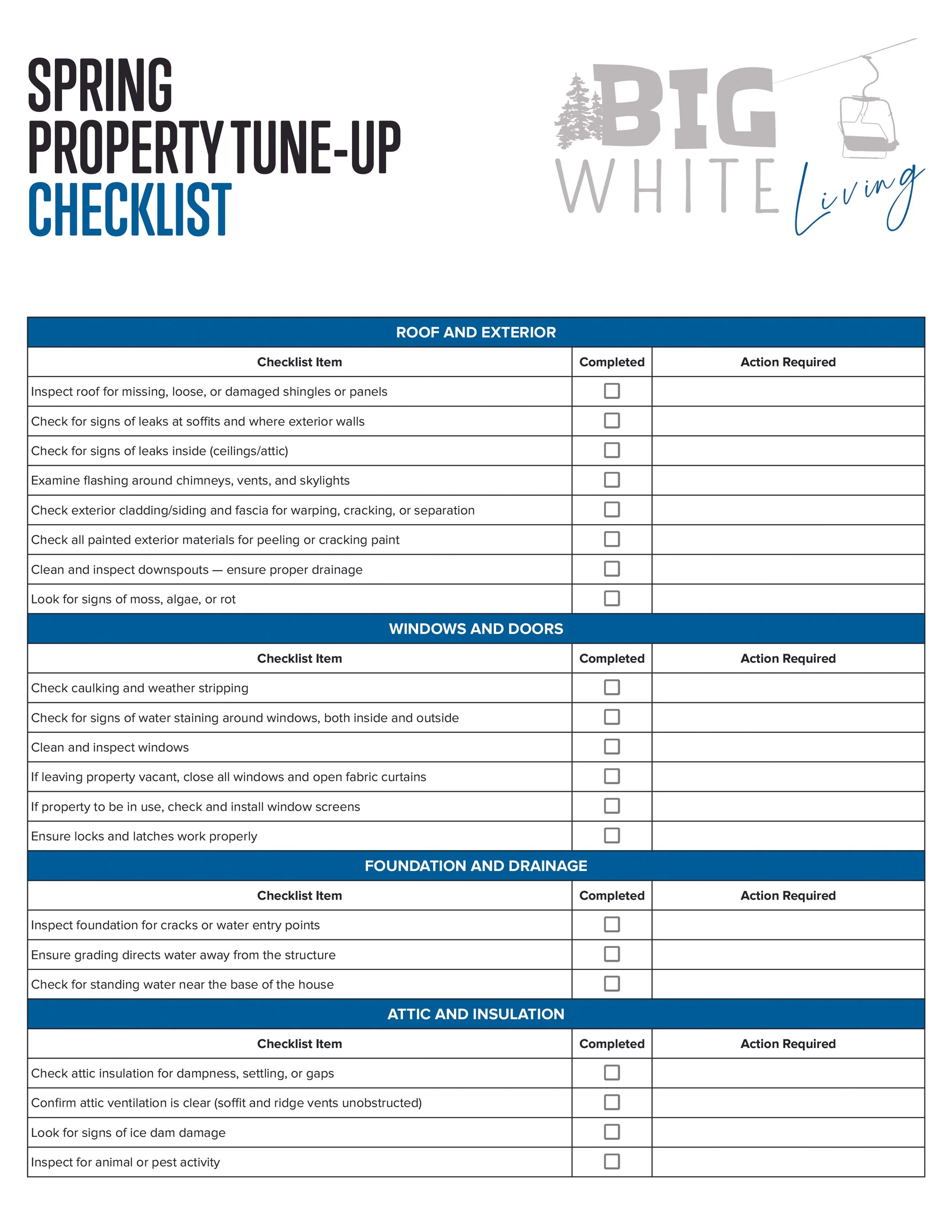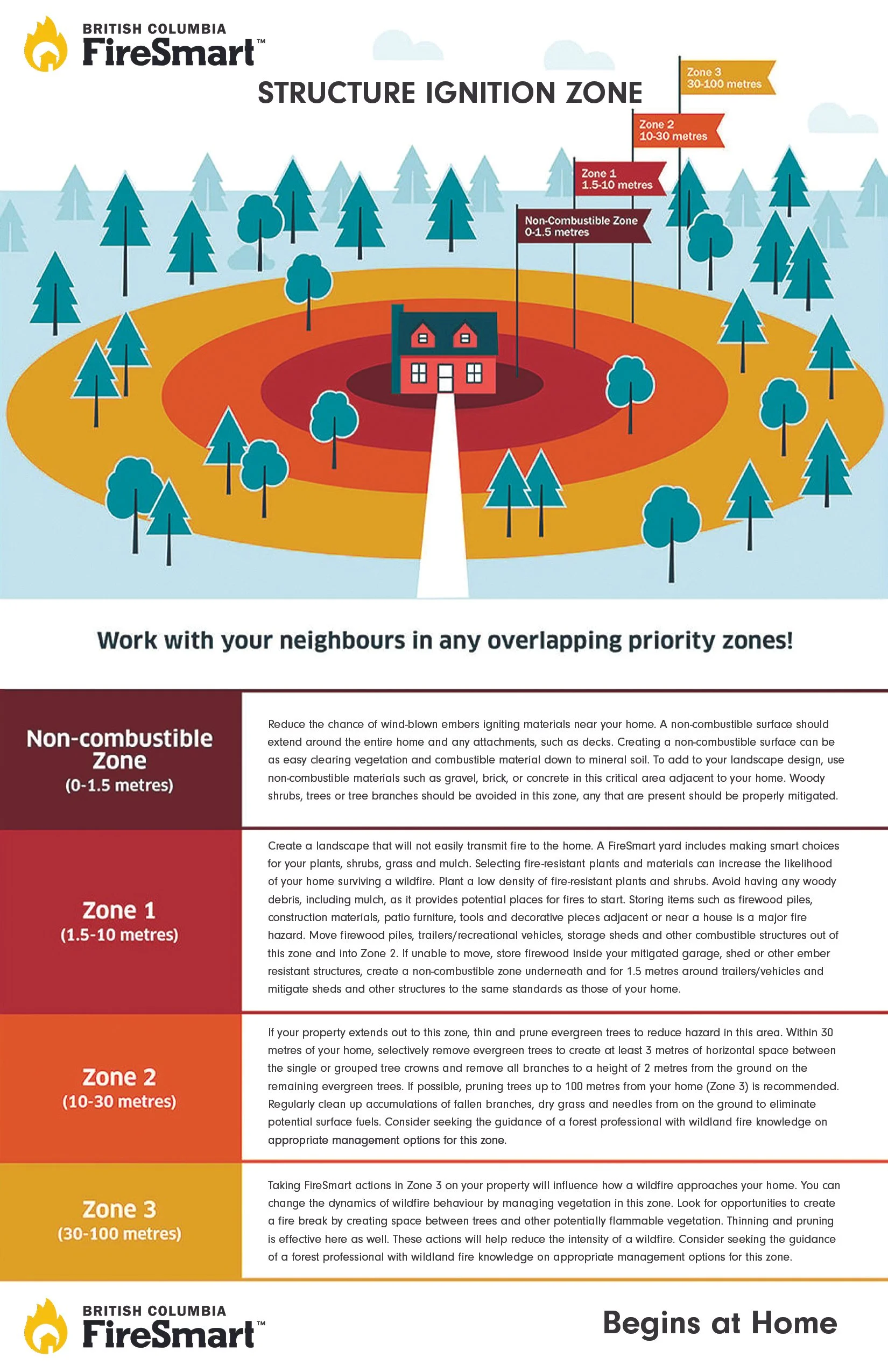Protect Your Investment — From Big White Living Magazine
As the snowpack begins to recede and the days stretch a little longer, Spring at Big White marks more than just the end of another unforgettable season — it’s also a critical time for homeowners to protect and preserve the value of their property for the long-term. Whether your ski home is a multi-plex dwelling tucked into the trees in Snow Pines or a modern slope-side chalet in Feathertop Estates, these next few weeks and months are the perfect opportunity to assess Winter’s wear and prepare your home for the seasons ahead. This extends to condo owners in strata communities too; as an individual unit owner, you should know what your strata council has planned for Summer maintenance and don’t just assume someone else has your building’s best interest in mind. Corey Moscaluk, co-owner operator of WW Mountain Services, and Big White’s Deputy Fire Chief, Dominic Carlile, both took the time to share their expertise on the topic . Here are 5 essential tasks that can make a big difference in safeguarding your investment:
get your
checklist
1. INSPECT THE ROOF
Harsh winter weather, freeze-thaw cycles, and heavy snow loads can take a toll on your roof and siding. If you experienced any water ingress, evidenced either by staining on the ceiling or by a more significant leak you may already know you roof needs further attention. However, it’s possible your roof is leaking without visible evidence to-date or has been damaged and may leak in the future. As soon as it’s safe to do so, inspect your roofing materials for cracked or missing shingles, metal flashing that’s shifted, and any other signs of physical damage or leaks. If you have access to your attic space, inspect for water staining on the undersurface of the roof. Do this yourself, consult someone with roof experience, or hire a professional roofing inspector. Corey recommends inspecting your roof annually, in the Spring, so any identified vulnerabilities can be repaired while in warmer weather, before they lead to more extensive problems in the future.
2. INSPECT THE BUILDING ENVELOPE
Wind, falling snow, and those constant freeze-thaw cycles are also extremely hard on the exterior cladding, trim, and other exterior components of your home. Inspect for damage, gaps, or warping on siding and trim that may have occurred during the colder months. These vulnerabilities, if left unaddressed, can lead to costly moisture damage or even structural issues. Also, inspect for peeling caulking around windows, doors, and any other building envelope protrusions. Corey frequently finds water damage around windows due to unaddressed damage wear to caulking. However, the most common deferred maintenance he sees at Big White is painting the exterior cladding and trim. “To ensure long-term integrity of the materials all exterior wood components should be painted or stained every 4-7 years. For buildings clad with cement board you will get a few more, but even those should be painted every 7-10 years,” says Corey. He goes on to add, “It’s not just about applying a coat of paint. For the best results you need to pre-wash, sand, and then apply 2 coats of paint with a high quality paint. It’s also important to ensure that adequate overnight temperatures are maintained after painting — typically above 10°C.
3. CHECK THE ATTIC FOR INSULATION ISSUES
Improper attic insulation or poor ventilation, have proven to be very common issues for homes and condo buildings at Big White and both contribute to the formation of ice dams, which can damage roofs, trim, and interior ceilings and other finishings. Spring is a great time to have a look — or have a professional evaluate, whether your attic is properly insulated and air-sealed. Ensuring the warm air from your home isn’t leaking into the attic space will not only protect your roof in winter, but also improve energy efficiency year-round. “If you have an older home in Snow Pine Estates, there is a very good chance your roof is inadequately insulated,” says Corey. However, insulation is only part of the equation. At Big White, you’ll see many buildings have these little roofed structures called dog houses placed around the top of the roof. These, along with ridge cap vents allow for warmed attic air to escape, making room for fresh air to come in through soffit vents. “Often, existing vents are just not enough. The air needs a little help to get moving,” says Corey. Where a lack of ventilation might be an issue he recommends exploring the replacement of existing ventilation baffles, with chutes that carry the cold air further into the attic and possibly even the addition of mechanical ventilation fans.
4. GENERAL SPRING TUNE-UP
The Spring is also a good time to take care of other exterior and interior property maintenance needs: check entryways, walkways, and driveways for cracks and deterioration, touch up walls and interior trim, check faucets and other water valves for drips, and test your smoke and carbon monoxide detectors. A thorough seasonal walkaround — ideally with a checklist in hand — can help you spot small issues before they grow into bigger, more expensive problems.
5. FIRESMART YOUR PROPERTY
Along with the warmer weather, soon we will have an increased risk of wildfires in the vast forests surrounding Big White. Now is the time to consider your home’s vulnerability to wildfire and take action. Wildfire risk is not only a physical threat but a financial one, as insurance premiums and deductibles have risen dramatically for Big White properties in recent years. “Thirty minutes of work can make a huge difference,” says Deputy Chief Carlile, “Most importantly, you want a non-combustible zone around the immediate perimeter of your home or condo building in order to prevent a ground fire from spreading to the building .” Clear away dry leaves, pine needles, branches, small vegetation, and flammable debris from around your house and outbuildings. Create a non-combustible zone at least 1.5 meters around your home using gravel, stone, or bare soil. Once you’ve addressed the Red Zone you can clear the ground further out and prune back low-hanging branches or overgrown shrubs that could act as fire ladders making sure to allow for about 2m of ground clearance; specifically making sure there is no woody debris and this includes exposed fire wood piles. “Don’t store wood on decks,” says Carlile. In fact, you’ll also want to clear off decks so they are free from any combustible materials and sweep out underneath them too. BBQ covers may keep your grill clean but even these are typically combustible and pose a significant risk to fires that spread by falling embers. “At Big White, the greatest wildfire threat is from ember storms as winds can carry burning embers from wildfires burning several kilometres away.
Condo property owners might think there is not a lot they can do to FireSmart their properties but all of the above applies to their buildings as well. It’s important that strata councils ensure the perimeter of any strata structure is clear from non-combustible material. For individual unit owners, the top things that you can do are clear your balconies, make sure all windows are closed, and leave all fabric curtains open. ”The extreme heat created by wildfires can transfer through window glass and ignite fabric curtains,” points out Carlile, “and these little precautions can make a serious difference.
For more detailed information have a look at the FireSmart quick guide on the next page or consult your local FireSmart guidelines for a comprehensive checklist.


